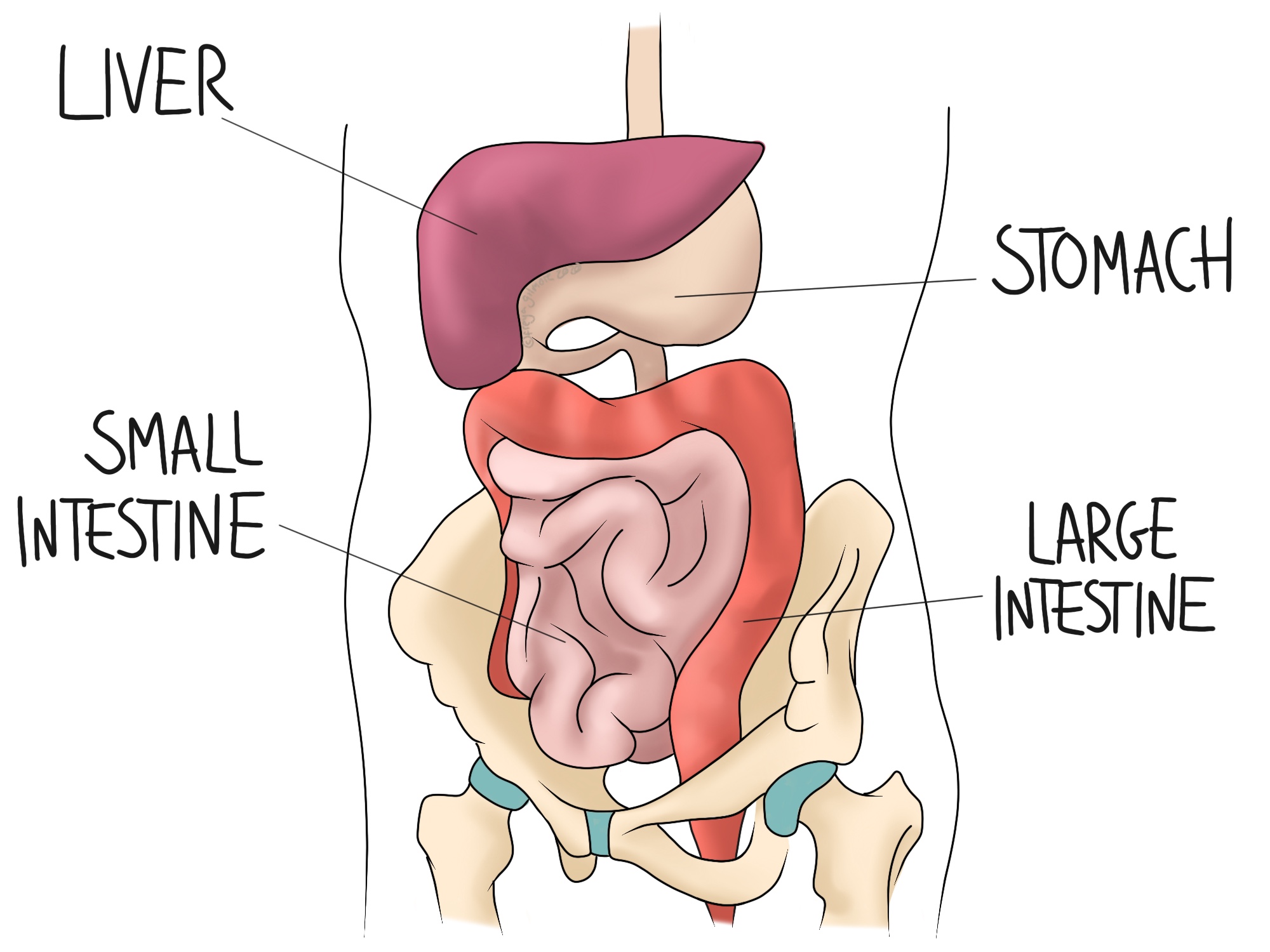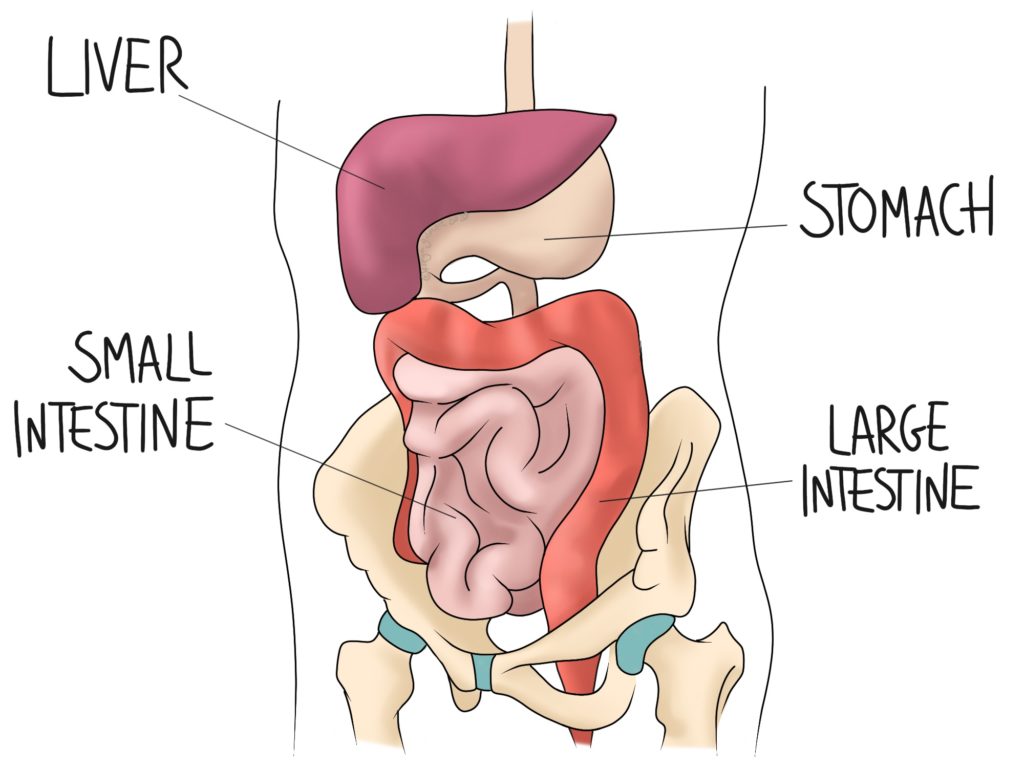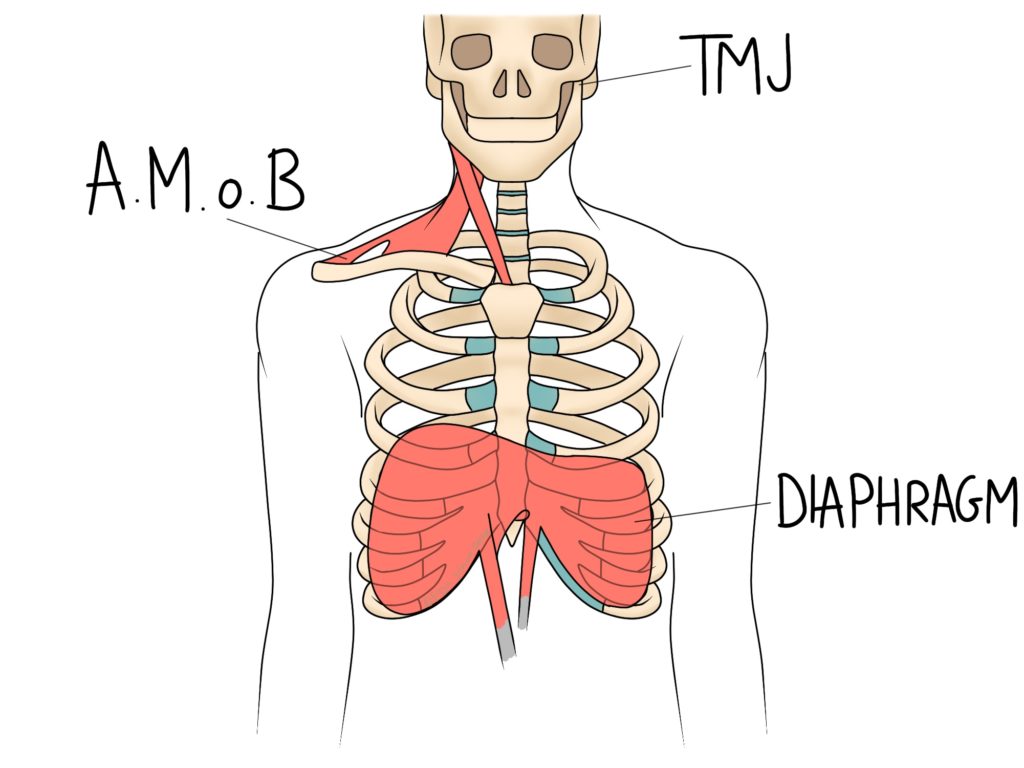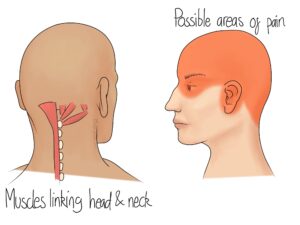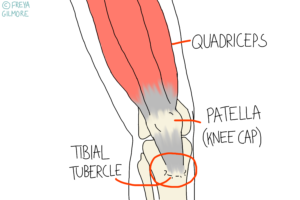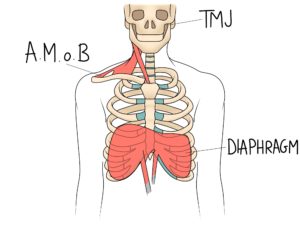The digestive organs are not always out of an osteopath’s remit. Problems with digestion can affect the rest of the musculoskeletal system, and treating the relevant muscles and joints may affect the digestive system.
The Diaphragm and the Digestive System
The diaphragm is a muscle that runs along the bottom of the ribs, separating the abdomen from the thorax above. It has a few holes in the centre for vessels and other structures to pass through. The oesophagus (food pipe) passes through the diaphragm on the way to the stomach.
Reflux
At around the point where the oesophagus passes through lies the oesophageal sphincter. The role of this sphincter is to keep stomach acid from travelling up and out of the stomach. When this fails, you get the symptoms of reflux or heartburn. Although we can’t work directly on the sphincter, we can work with the diaphragm.
Osteopaths understand the links between the diaphragm, breathing, and digestion. The three are interlinked as breathing is often affected in patients with reflux. We also know that the diaphragm can be considered part of the “anti-reflux barrier”. By this token, it makes a lot of sense that treatment to the diaphragm and beyond may help patients with heartburn, reflux, and GERD.
Treatment to the diaphragm can be direct or indirect, working on the muscle itself or the areas close by. This may mean working on the lower back where the muscle connects, or direct application to the soft tissues of the abdomen.
Some women experience increased reflux symptoms during pregnancy. Osteopathy is a gentle modality suitable throughout pregnancy- this includes work on the diaphragm. If this affects you, your osteopath can also give advice for things like sleeping positions that can help to minimise symptoms.
Bloating due to digestive problems
A common symptom of digestive problems is bloating. This applies upward pressure to the diaphragm causing further discomfort. It may even lead to secondary pain in the neck due to the neurological link between the two areas. If the effect is severe enough to affect breathing, that could also cause discomfort further up the body.
As mentioned above, we can work on the diaphragm in clinic. There are also exercises you can do at home to help keep the diaphragm happy. Other exercises and treatment to the upper back can also help, by improving general movement and addressing any secondary aches and pains.
Irritable Bowel Syndrome (IBS)
IBS is poorly understood, and technically is just a label for a collection of symptoms. As such, there isn’t one straightforward cause or explanation. However, we can see patterns in how different people with IBS present, and we can find trends within one person too.
Some patients with IBS find that spinal manipulation helps manage their symptoms. This means putting a small impulse between joints in the spine. Some patients call this “clicking” or “cracking”, but if that is not appropriate for you, we have other treatments available.
If you’ve been diagnosed with IBS, your GP may have asked you to keep a food diary or look for triggers. Your osteopath may be able to support you with spotting patterns as we have the luxury of time to discuss them with you.
If you suffer from digestive problems, you can make an appointment online.

